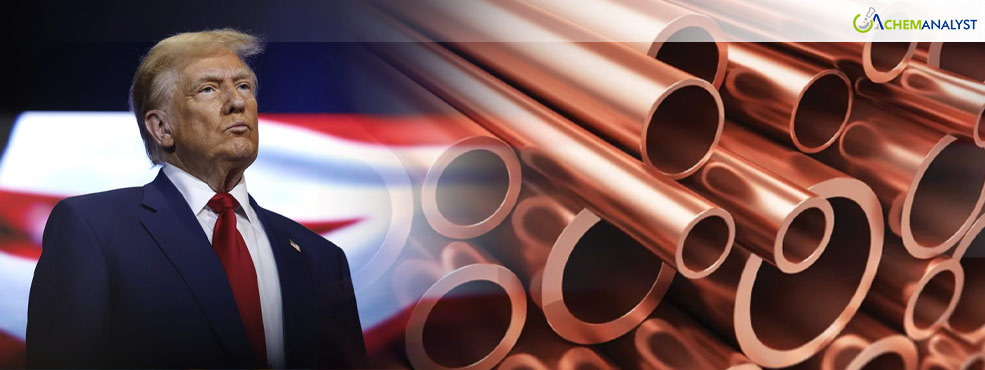Welcome To ChemAnalyst

As the incoming Trump administration considers implementing a significant 25% tariff on copper imports from Canada and Mexico, the future of North American trade and the global copper market hangs in the balance. While it remains unclear whether these tariffs are a negotiating tactic or a reality, the decision could have profound impacts on the copper industry, reshaping trade flows and supply chains for years to come.
Under the United States-Mexico-Canada Agreement (USMCA), which was signed during Trump’s first term, tariffs on copper were not expected. However, if these sanctions are enforced, it would largely undermine the very free trade agreement designed to bolster economic relations in the region.
A Ripple Effect Across Industries
Canada plays a critical role in the US copper market, especially in the supply of cathodes and semi-finished products, which are essential for manufacturing copper wire rods. In 2023, US imports from Canada totalled 128,000 tons, representing 16% of total copper imports. Mexico’s contribution, although smaller, was also significant at 14,000 tons. If tariffs are enacted, Canada and Mexico would likely lose their competitive edge in supplying the US copper market, with companies forced to find alternative sources—potentially from Chile, Peru, or even countries like Korea, Japan, and India. This would significantly alter global copper trade flows.
The consequences of such a shift could be far-reaching. The US, which imported over 767,000 tons of refined copper in 2023, is heavily dependent on copper from these neighbouring countries. Disruptions to this supply chain would trigger a cascade of issues, particularly in the automotive sector, which is a major consumer of copper. The trade in copper is valued at over $900 billion annually between the US and Canada alone, and any tariff imposition threatens to destabilize this delicate balance.
Retaliation and Market Realignment
Canada and Mexico could respond to the US tariffs by imposing their own retaliatory measures, which would only further complicate an already tense trade environment. US is most likely to have surge in copper growing market and import on particular places that shares less competition in terms of this. As an example, if Chile imports copper and so Peru will surge, the more demand more higher and surge in prices, reason being the logistic and trade restrictions.
This reshuffling of trade dynamics might also spark a renewed push for domestic copper production in the US. Under the Biden administration’s Inflation Reduction Act (IRA), which has shown how quickly the US can ramp up domestic industry with the right incentives, a shift in production could be a possibility—though currently, there are few incentives to counterbalance the expected rise in import prices.
The Secondary Copper Dilemma
One of the more contentious issues surrounding Trump’s proposed tariffs is their potential impact on US copper scrap exports, particularly to China. As the largest supplier of copper scrap to China, the US has seen a steady flow of secondary copper exports, which account for over 17% of China’s annual demand. With Trump’s recent threats to escalate tariffs on Chinese exports, China may become more reluctant to purchase US copper scrap, further exacerbating supply chain challenges.
The situation bears similarities to 2018 when China imposed its own 25% tariffs on US-origin copper scrap as part of the broader trade war. This time, the US could retaliate by restricting exports of secondary copper, diverting material to meet domestic needs and mitigating the impact of supply shortages.
A Shifting Copper Landscape
With these developments on the horizon, the copper market is poised for significant disruption. If Trump follows through with the tariffs, the repercussions will ripple through global markets, affecting everything from raw copper supplies to the automotive and electronics industries.
In conclusion, while the precise fate of Trump’s copper tariffs remains uncertain, their potential to alter the global copper landscape is undeniable. Whether through direct economic consequences or retaliatory actions, this move could signal a new chapter in North American trade relations and the copper industry at large.
We use cookies to deliver the best possible experience on our website. To learn more, visit our Privacy Policy. By continuing to use this site or by closing this box, you consent to our use of cookies. More info.
